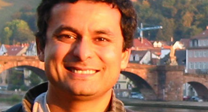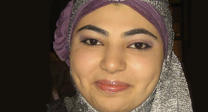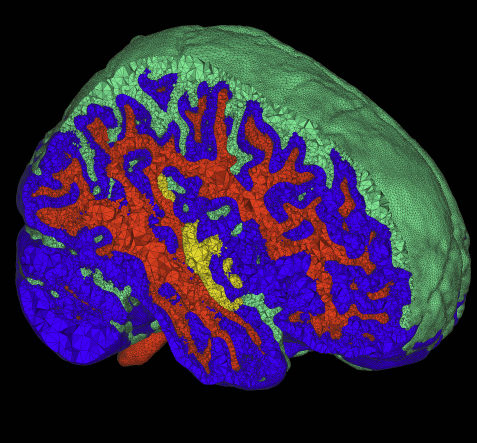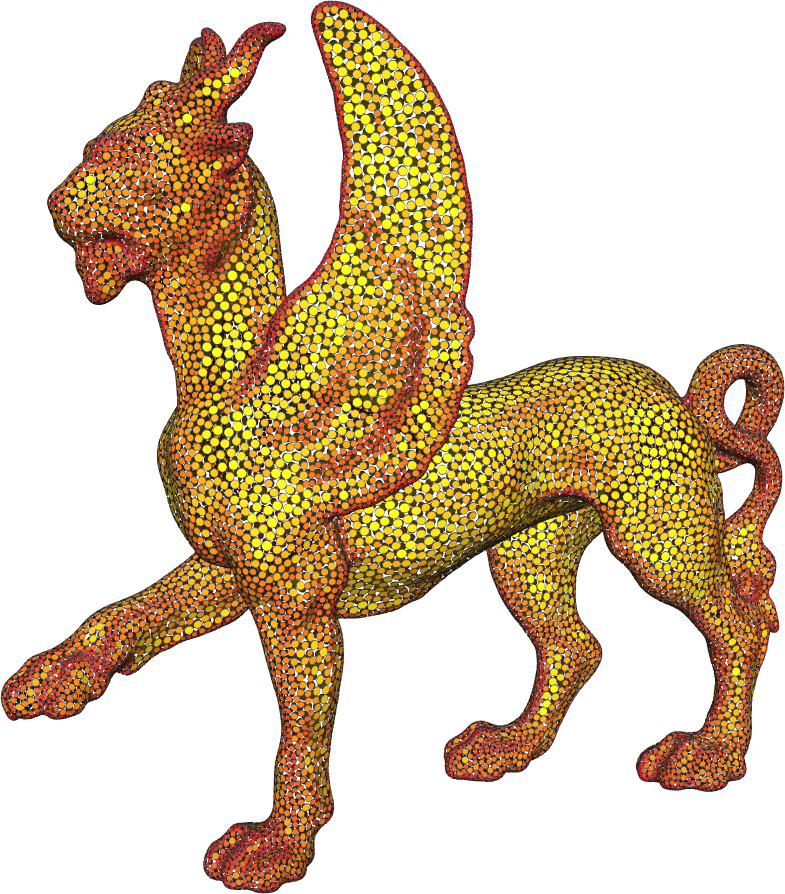Image Analysis
SCI's imaging work addresses fundamental questions in 2D and 3D image processing, including filtering, segmentation, surface reconstruction, and shape analysis. In low-level image processing, this effort has produce new nonparametric methods for modeling image statistics, which have resulted in better algorithms for denoising and reconstruction. Work with particle systems has led to new methods for visualizing and analyzing 3D surfaces. Our work in image processing also includes applications of advanced computing to 3D images, which has resulted in new parallel algorithms and real-time implementations on graphics processing units (GPUs). Application areas include medical image analysis, biological image processing, defense, environmental monitoring, and oil and gas.
Ross Whitaker
Segmentation
Chris Johnson
Diffusion Tensor AnalysisFunded Research Projects:
Publications in Image Analysis:
  An Optimal-Path Approach for Neural Circuit Reconstruction E. Jurrus, R.T. Whitaker, B. Jones, R. Marc, T. Tasdizen. In Proceedings of the 5th IEEE International Symposium on Biomedical Imaging: From Nano to Macro, pp. 1609--1612. 2008. PubMed ID: 19172170 |
 Realizing the Potential of Positron Emission Tomography with 18F-Fluorodeoxyglucose to Improve the Treatment of Alzheimer N.L. Foster, A.Y. Wang, T. Tasdizen, P.T. Fletcher, J.M. Hoffman, R.A. Koeppe. In Journal of the Alzheimer, Vol. 4, No. 1, Suppl. 1, pp. S29--36. 2008. PubMed ID: 18631997 |
  Automatic Classification of Alzheimer N. Sadeghi, N.L. Foster, A.Y. Wang, S. Minoshima, A.P. Lieberman, T. Tasdizen. In Proceedings of IEEE International Symposium on Biomedical Imaging (ISBI 2008): From Nano to Macro, pp. 408--411. 2008. DOI: 10.1109/ISBI.2008.4541019 |
  Principal Components for Non-Local Means of Image Denoising T. Tasdizen. In Proceedings of the International Conference on Image Processing (ICIP 2008), pp. 1728--1731. 2008. PubMed ID: 19180227 |
  A Structural MRI Study of Human Brain Development from Birth to Two Years R.C. Knickmeyer, S. Gouttard, C. Kang, D. Evans, K. Wilber, K.J. Smith, R.M. Hamer, W. Lin, G. Gerig, J.H. Gilmore. In The Journal of Neuroscience, Vol. 28, No. 47, pp. 12176--12182. Nov, 2008. PubMed ID: 19020011 |
  CRA-NIH Computing Research Challenges in Biomedicine Workshop Recommendations D. Reed, C.R. Johnson. Note: Computing Research Association (CRA), 2007. |
 Anisotropic Curvature Motion for Structure Enhancing Smoothing of 3D MR Angiography Data O. Nemitz, T. Tasdizen, M. Rumpf, R.T. Whitaker. In Journal of Mathematical Imaging and Vision, Vol. 7, No. 3, pp. 217--229. 2007. DOI: 10.1007/s10851-006-0645-2 |
  Automatic Assembly of TEM Mosaics and Mosaic Stacks Using Phase Correlation SCI Institute Technical Report, P.A. Koshevoy, T. Tasdizen, R.T. Whitaker. No. UUSCI-2007-004, University of Utah, 2007. |









